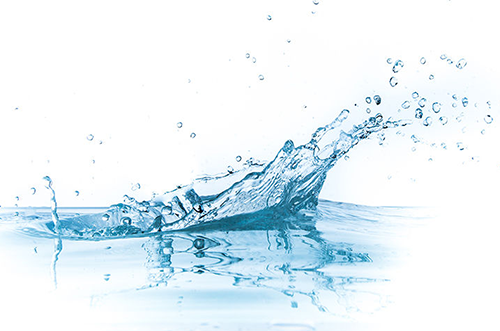The Myths and Facts of Fluorochemical Repellents
Everyone’s experienced it. You’re out there on the trail, and suddenly you get caught off guard by a downpour. Luckily, you have your trusty water-repellent jacket. Simply zipper it up and pop the hood over your head, and like magic, the water just rolls right off. In those rainy moments, have you ever wondered what makes water bounce off the surface of your jacket? Do you ever think it might be similar to how ducks stay dry in the water? Or perhaps it’s more like how food won’t stick when cooked in Teflon-coated pans? Or do you think it might be a little of both?
Natural oils and waxes like those found on duck feathers were once applied to cotton to offer some degree of water resistance. But, like any early technology, there were drawbacks. Natural oils would discolor fabrics, and they just weren’t durable to laundering. Waxes were also found to reduce the air permeability of fabrics, making the wearer pretty uncomfortable. Over time, however, the textile industry introduced more sophisticated synthetic chemicals to enhance repellency. These advancements led to high-performance Teflon-like repellents commonly referred to as fluorochemicals. These types of repellents became, and still are, quite popular because they exhibit excellent water repellency, and they’re very durable. They even repel oil and oil-based stains that you typically encounter such as those found in lotions, salad dressings, pizza, and of course, your skin. Even sticky stuff, like maple syrup, slides right off.
The biggest downside (what, you didn’t think it was flawless, did you?) to these advanced, synthetic repellents is that they don’t break down in the environment (e.g. biodegrade) quite easily. Depending on how you look at it, this is both good and bad. You see, when these repellents are on your ski jacket, that’s a good thing. That’s because they can last the entire lifespan of the jacket, thereby keeping you dry at all times and keeping your garment looking fresh for the slopes. But wait, here’s the rub: before your ski jacket gets to the store, it’s treated with fluorochemicals, and the wastewater from this treatment eventually makes its way into our water, soil, and even air sources. Obviously, that’s bad. The thing is, biodegrading is nature’s way of recycling, and when nature can’t recycle, the materials build up in the environment and eventually end up in our bodies. That’s right, you have synthetic water repellents in you. Think about that!
Lucky for us, researchers, government regulators, and NGOs have raised a stink (rightfully so), leading to a phase out of the most harmful fluorochemical repellents. The newest generation of these repellents have a better environmental and health profile. Yes, better is good. But better isn’t perfect. There’s always room for improvement. That’s why here at Bolger & O’Hearn, we believe the time is now rife to reduce our dependence on these types of fluorochemical repellents. In fact, the latest advancements in naturally inspired repellents have led us full circle. We’re now looking where it all started—natural oils and waxes.

Bolger & O’Hearn’s Altopel F3 is the latest generation of eco-friendly, readily biodegradable durable water repellents. Altopel F3 is excellent at repelling water, and it’s highly durable, standing up to heavy wash and abrasion. And better yet, it doesn’t have the potential to accumulate in our environment, unlike those unpleasant fluorochemicals.
Now that you’re well versed in the history of repellents, let’s clear up any further myths surrounding them.
MYTH: Consumers don’t care what makes their jackets repel water. They just want to know it works.
FACT: Actually, many do care. That’s why many apparel brands, government organizations, NGOs, and like-minded textile suppliers have been working toward the highest performance standards, all while minimizing health and environmental risks.
MYTH: The repellent technology used on outdoor gear has no effect on the environment.
FACT: Naturally inspired repellents such as Altopel F3 typically have much better environmentalprofiles than their synthetic, fluorochemical counterparts, as they’re specially designed as eco-friendly alternatives that don’t build up in our air, soil, and water.
MYTH: The latest naturally inspired water repellents don’t perform as well as the Teflon-like, fluorochemical repellents.
FACT: Bolger & O’Hearn’s Altopel F3 completely debunks this myth. Altopel F3 is a naturally inspired durable water repellent that’s highly effective at repelling water and just as—if not more—durable than its fluorochemical counterparts.
If we can leave you with one takeaway today, it’s this—Fluorochemical repellents are effective repellents, but they don’t break down easily. That’s why you should look to the more eco-friendly, biodegradable options.
**If you’d like to dive even deeper into the world of Altopel F3, please contact Shawn Honeycutt at Bolger & O’Hearn (shoneycutt@bolgerohearn.com). For sales inquiries regarding Altopel F3–based fabrics, please contact Concept III (info@conceptiii.com).







